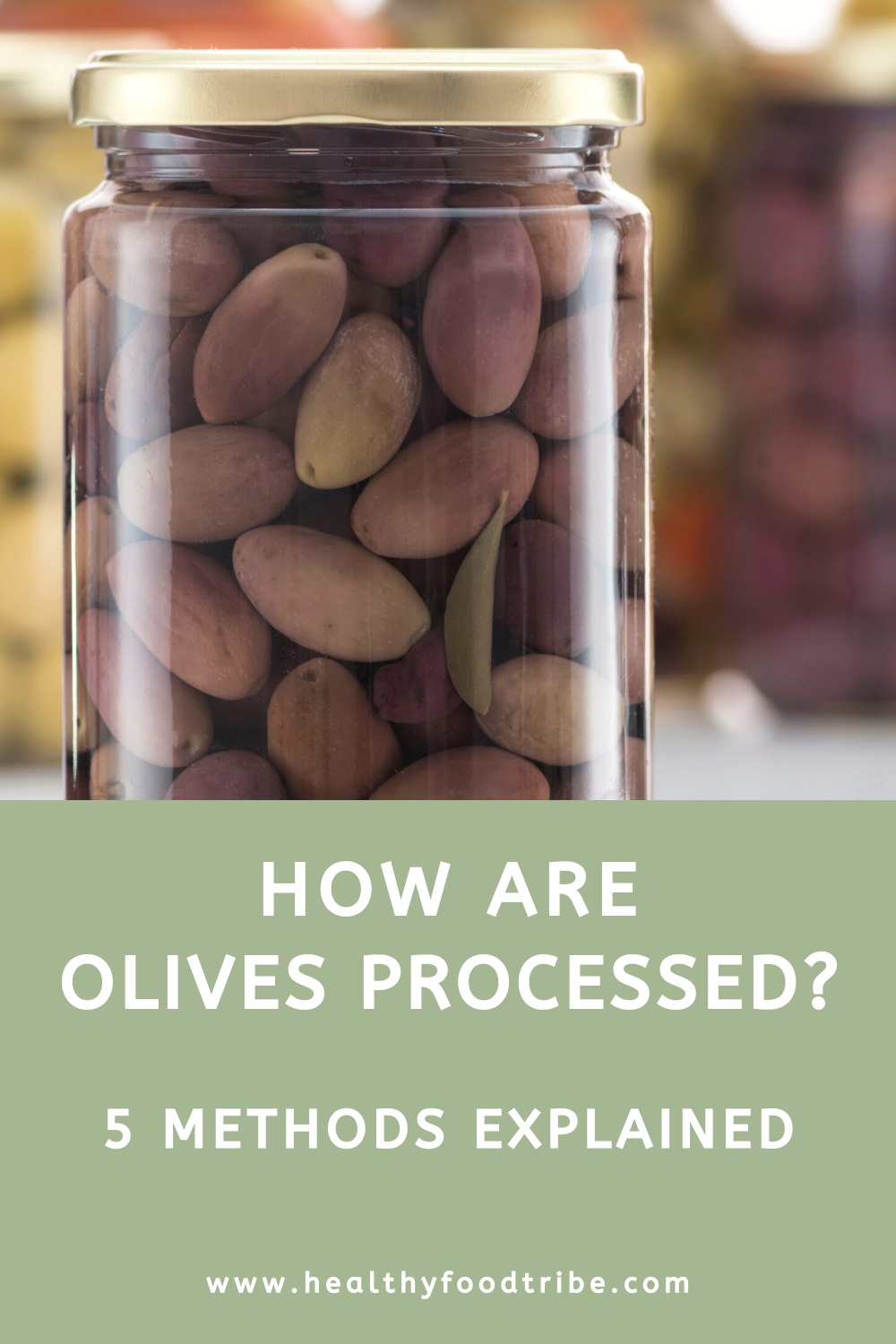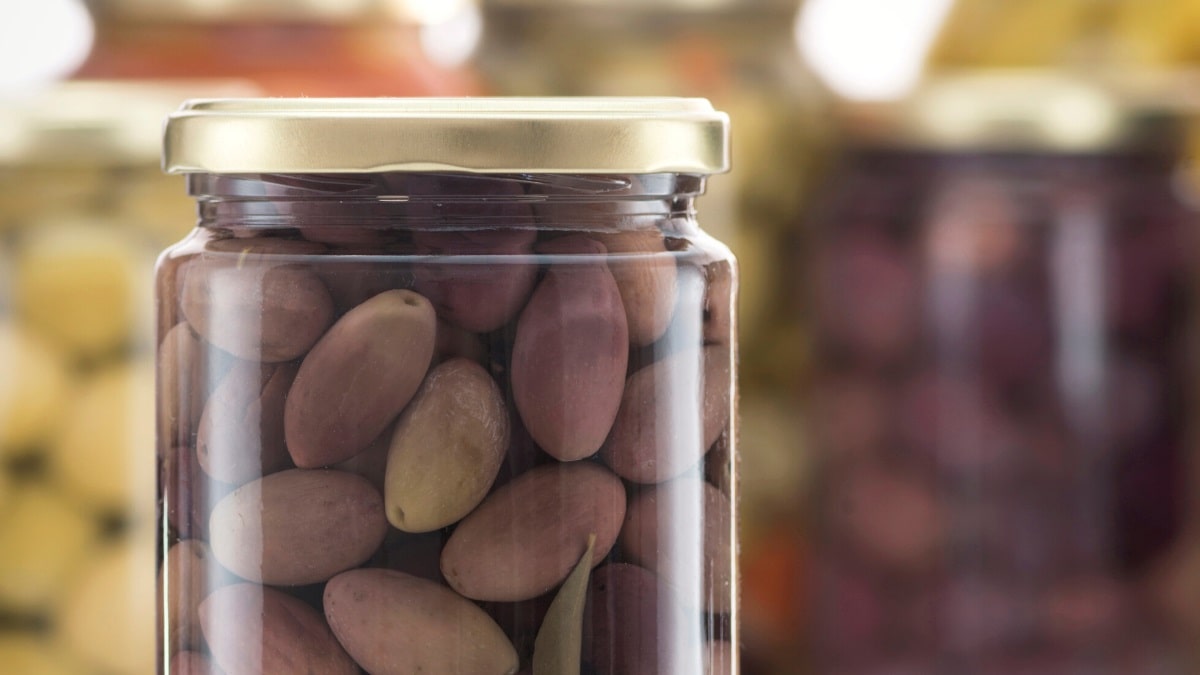Last updated: January 30, 2024
This guide explores the different olive processing methods, from brine to lye curing, that turn bitter olives into culinary treasures.
Olives, the emblematic fruit of the Mediterranean, embark on a remarkable transformation from tree to table.
In their raw state, they’re laden with a natural bitterness that requires careful processing to unveil the flavors we cherish.
In this article, I will guide you through the time-honored and modern olive processing techniques that tame the olive’s bite, making it a versatile staple in kitchens around the globe.
5 Olive Processing Methods
Olives can be harvested both when they are green and unripe, or when they are fully ripe and have turned dark purple to black.
Regardless of the stage at which they are picked, olives are not palatable straight from the tree because they contain a bitter compound called oleuropein. To make them edible and tasty, they must undergo curing and fermentation processes that remove the bitterness and make them flavorful.
The chosen processing method depends on the olive variety, regional traditions, desired taste, and texture, as well as the intended use of the olives.
1. Water Curing
Water curing is a straightforward, natural process that leans on one of nature’s most abundant resources to temper the olive’s inherent bitterness.
Once harvested, the olives are placed in large containers or barrels filled with water. This process typically spans over a period of one to two weeks, depending on the olive variety and size.
Once the bitterness is leached to the desired level, the olives are often given a final rinse. They can then be immersed in brine (saltwater solution) for preservation and further flavor development.
In modern operations, oxygenation tanks are used to speed up the water-curing process. The tanks inject air or pure oxygen to promote oxidation, which can improve the taste and accelerate bitterness removal.
2. Brine Curing
Brine curing is a method that not only reduces the bitterness of olives but also introduces extra flavor.
Olives are submerged in a brine solution; a carefully balanced mixture of water and salt. The concentration of salt needs to be high enough to draw out the bitterness, but not so high as to overpower the natural flavors of the olive.
The olives bathe in this brine solution for a duration that can vary from a few weeks to several months. The salt helps to ferment the olives slightly, creating lactic acid, which acts as a natural preservative.
After curing, the olives can be enjoyed in their simplest form or may be further marinated with herbs, garlic, lemon, or other seasonings to enhance their flavor profile.
Brine curing is a pretty common food processing method, not just for olives but also for other foods such as meat and fish.
3. Dry Curing
Dry curing, also called salt curing, is a simple, age-old technique that transforms fresh olives into intensely flavorful, wrinkly treats.
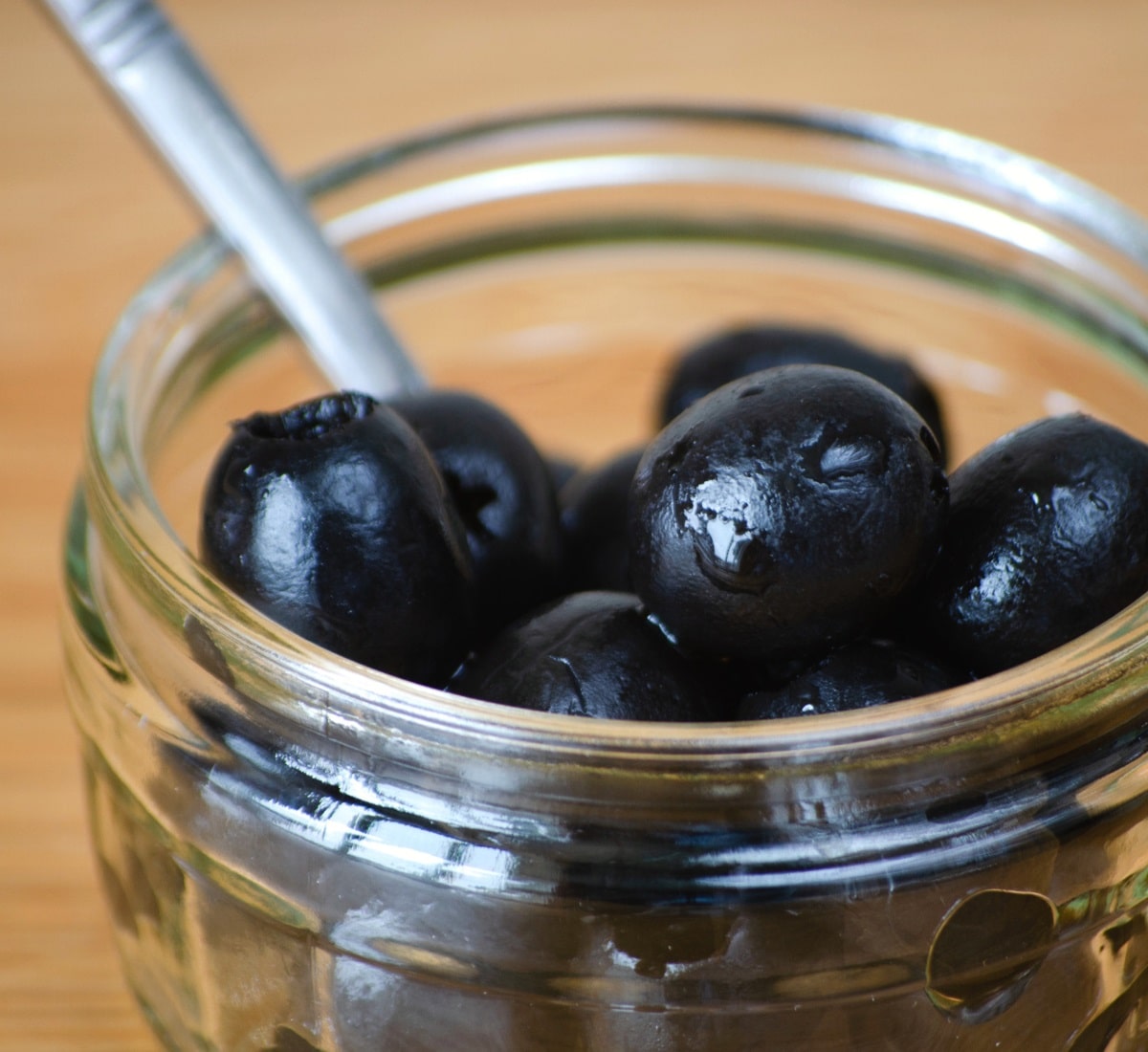
After cleaning, olives are packed in salt, which draws out moisture and bitterness. This dehydration process concentrates the olives’ natural flavors and turns them into a chewy, richly seasoned delight. Over the course of a few weeks, the salt is regularly stirred to ensure even curing.
Once the olives are sufficiently shriveled and robust in taste, they are rinsed to remove excess salt. An optional final touch is a coating of olive oil, which keeps them supple and adds a subtle richness.
4. Lye Curing
Lye curing is a rapid process that neutralizes the bitterness of olives in a matter of hours.
In this method, olives are soaked in a solution of lye, or sodium hydroxide, which is an alkaline substance that swiftly breaks down the bitter compounds. The olives are immersed in the lye solution for a very precise duration, typically between 12 to 24 hours, depending on their size and type.
After the lye treatment, the olives undergo thorough washing with water to eliminate any residue of the lye. The lye-cured olives are then often transferred to a brine solution to initiate a brief fermentation period, which further develops their flavor and preserves them for longer storage.
The result of lye curing is a batch of olives that are mild in flavor and ready for consumption much quicker than those treated with other methods. This efficiency is why lye curing is commonly used in commercial olive production.
5. Air Debittering
The debittering of olives with air is a modern twist on traditional methods, leveraging the power of oxygen to mellow the olives’ sharp taste.
Olives are subjected to an overpressure of oxygen or air, gradually reducing the bitterness while the olives are still whole.
This method is relatively quick, taking days instead of weeks or months. The olives treated in this way typically retain a firmer texture and have a more natural olive taste.
More About Olives
Let’s go through some interesting facts and misconceptions about olives.
Green, Brown or Black Olives?
Olives are typically green or black. The ripeness or maturity of the olive essentially determines the color. Young, unripe olives are green, whereas ripe olives are darker colored.
The average olive goes through various stages of ripeness with different colors. They go from green to light brown, and then from red or purple to black.
Green olives typically have a firm texture with a nutty flavor, whereas ripe, dark olives are softer and have a meatier taste. It’s all about personal preferences!
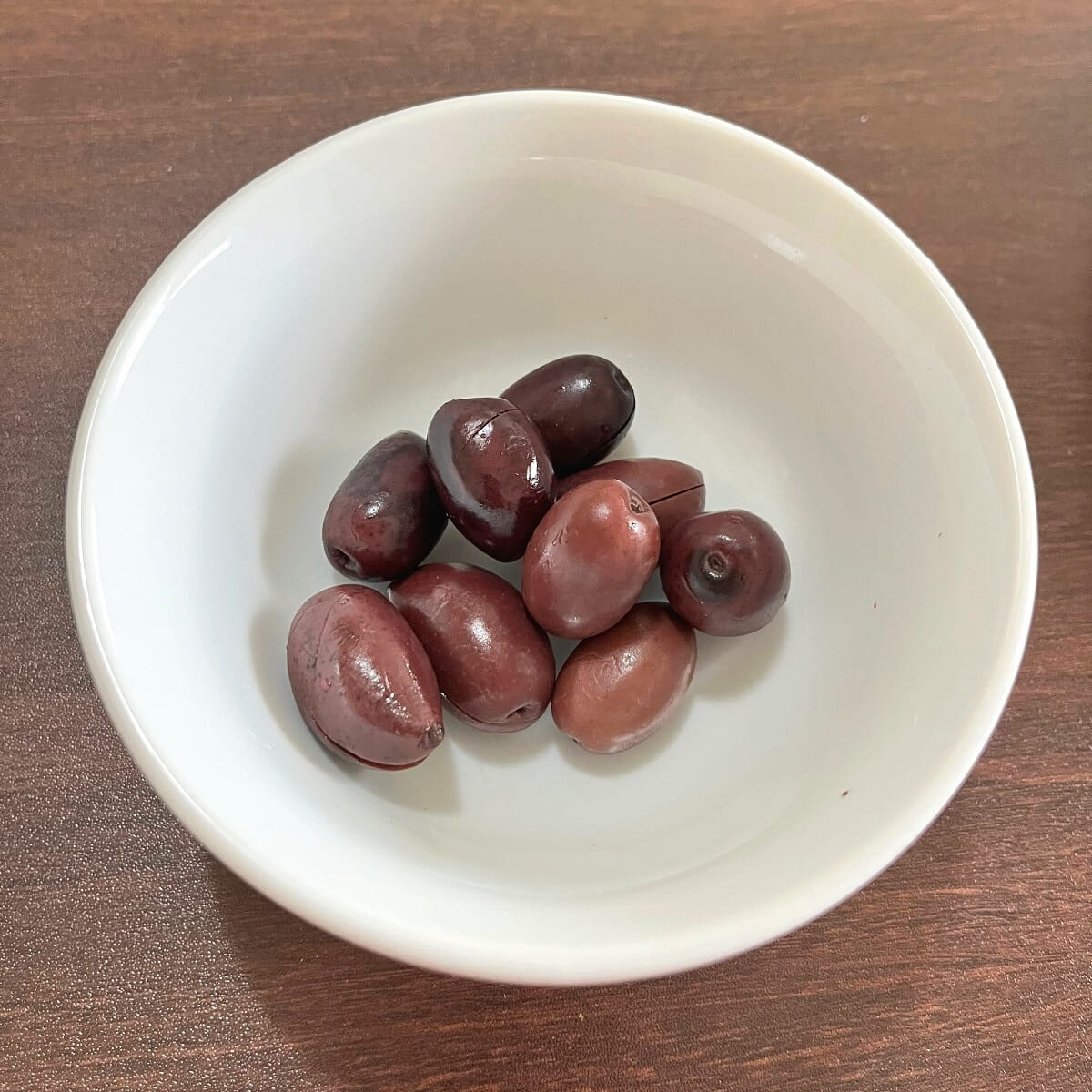
To give you some examples, one of my all-time favorite olive varieties, the Kalamata olive, is dark purple/brown. The Castelvetrano olive, on the other hand, is bright green.
How to Store Olives?
Olives are super resilient! Unopened olives can maintain their freshness and flavors for up to two years at average room temperature.
Opened olives can be kept in a refrigerator for up to one month before they start losing some of their freshness.
It’s best to store them in a glass container, ideally in their original liquid instead of water.
Fruit or Vegetable?
Olives are a fruit! They contain a seed, and they come from the flower of the olive tree, which classifies them as a fruit, even though they don’t taste like fruit without that typical sweetness.
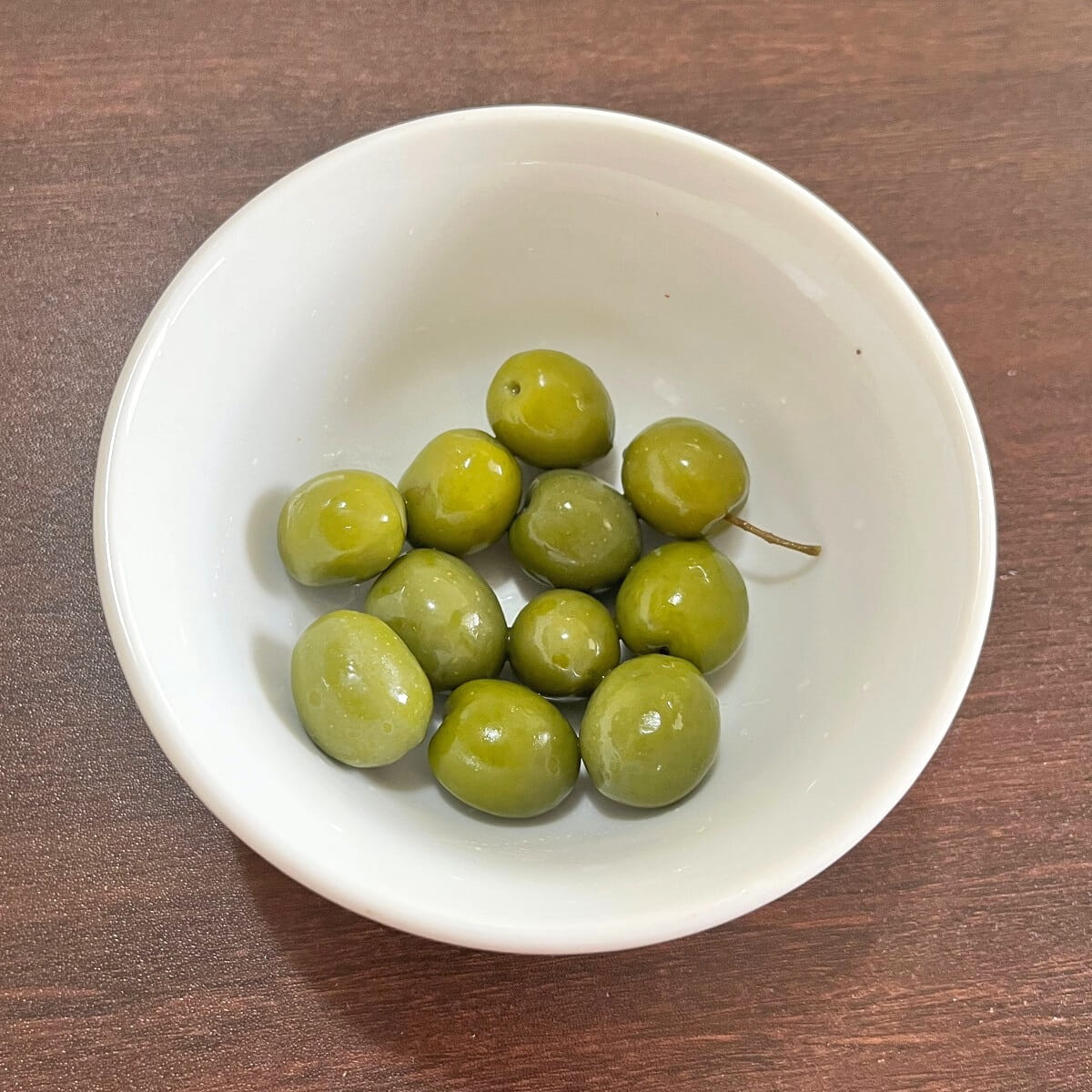
To be more specific, in botanic terms, olives are a type of drupe, or stone fruit, with an outer fleshy part and a single shell inside.
Read my guide to fruits that people think are vegetables for more such fruits.
Where Are Olives Most Popular?
Unsurprisingly, olives are an essential part of the Mediterranean diet, especially in countries such as Turkey, Greece, Italy, and Spain.
Countries in North Africa that border the Mediterranean Sea, such as Morocco and Egypt, also produce large amounts of olives.
Not only do these countries produce olives for their domestic markets, but they also export large portions to other parts of the world.
Argentina in South America also produces large amounts of olives, and to a lesser extent, Mexico and California also have olive trees.
